Differences between 720nm, 780nm, and 850nm Black and White Infrared Photography
Infrared photography is typically known for its vibrant, ethereal colors, but it also shines in the realm of creative black-and-white imagery. This striking style of B&W infrared videography was recently showcased in the Colosseum scenes of Dune: Part II, which were filmed using black-and-white infrared techniques.
Choosing the right IR filter is crucial for achieving the desired effects. Filters are often categorized by their wavelength cutoffs such as 720nm. We offer multiple filters that operate within the realm of B&W—720nm, 780nm, 850nm, 930nm and 1000nm—but what are the actual differences between the looks you can achieve with each wavelength? In this article, we’ll focus on three of the most popular black and white infrared filters and breakdown the actual differences between 720nm, 780nm, and 850nm.
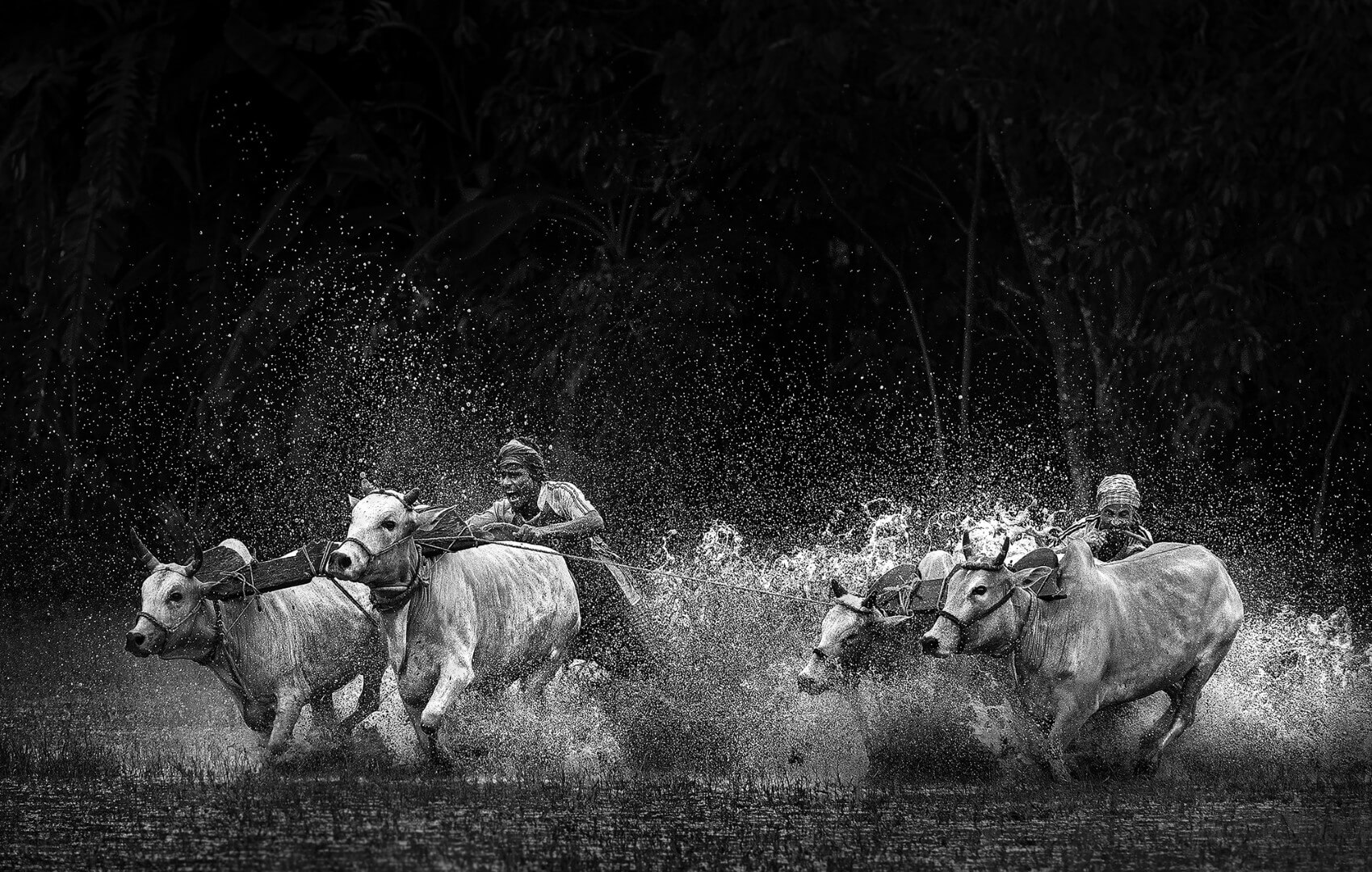
What is Black and White Infrared Photography?
Black-and-white infrared photography is a form of photography that captures the infrared (IR) light spectrum, which is invisible to the human eye, and renders it in monochromatic tones. Unlike standard photography that captures visible light (ranging from about 400nm to 700nm), black-and-white infrared photography captures light in the near-infrared range, typically from around 700nm to 1000nm. This produces a unique aesthetic where familiar subjects appear drastically different, creating striking, high-contrast images.
1. 720nm IR Filters
This is the tried-and-true classic IR filter. It allows for some great blue sky false color and provides great contrast and dynamic range for black and white imagery. This is equivalent to the Hoya R72 and Wratten 89b. While not as high contrast as the 850nm, this filter is often preferred over the 850nm for B&W work since it provides a little more color for B&W processing. On top of that, it allows more light to pass through since the cutoff is lower (720nm) than 780nm and 850nm, so it is easier to use faster shutter speeds and lower ISO in lower light conditions. This filter requires post-processing and is compatible with a full spectrum camera or a lower cutoff IR converted camera. This filter can also be used with stock cameras with a long exposure.
When to use this filter: This filter is great for shooting mild color and black & white. This filter produces the traditional dark blue skies and can also be processed for color.
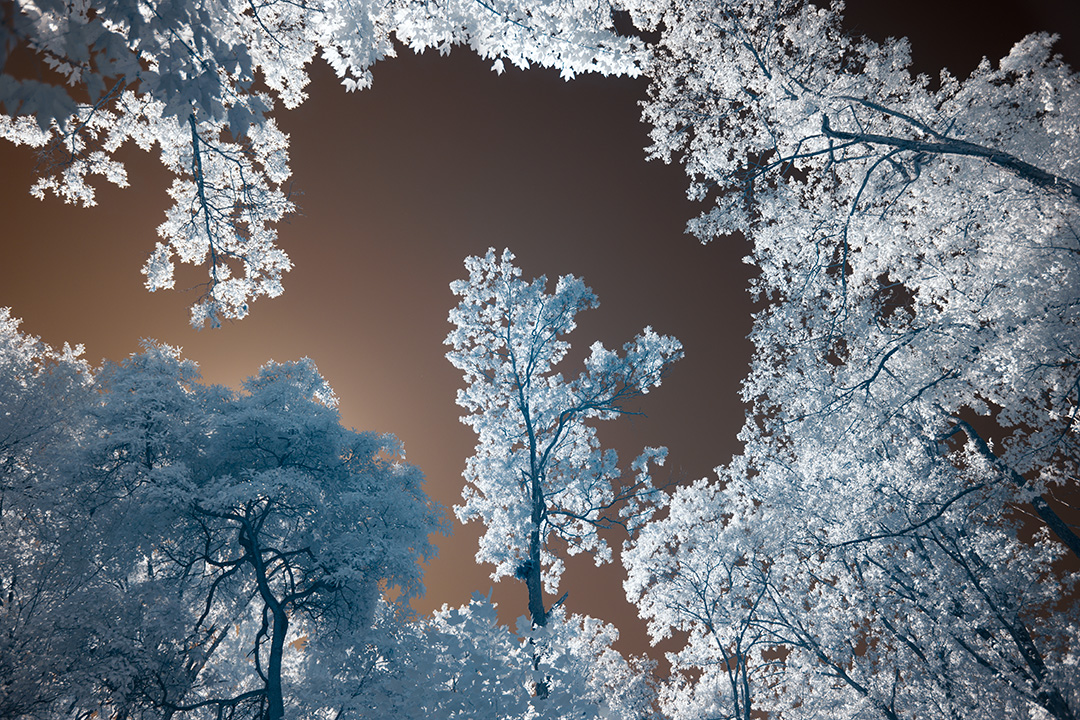
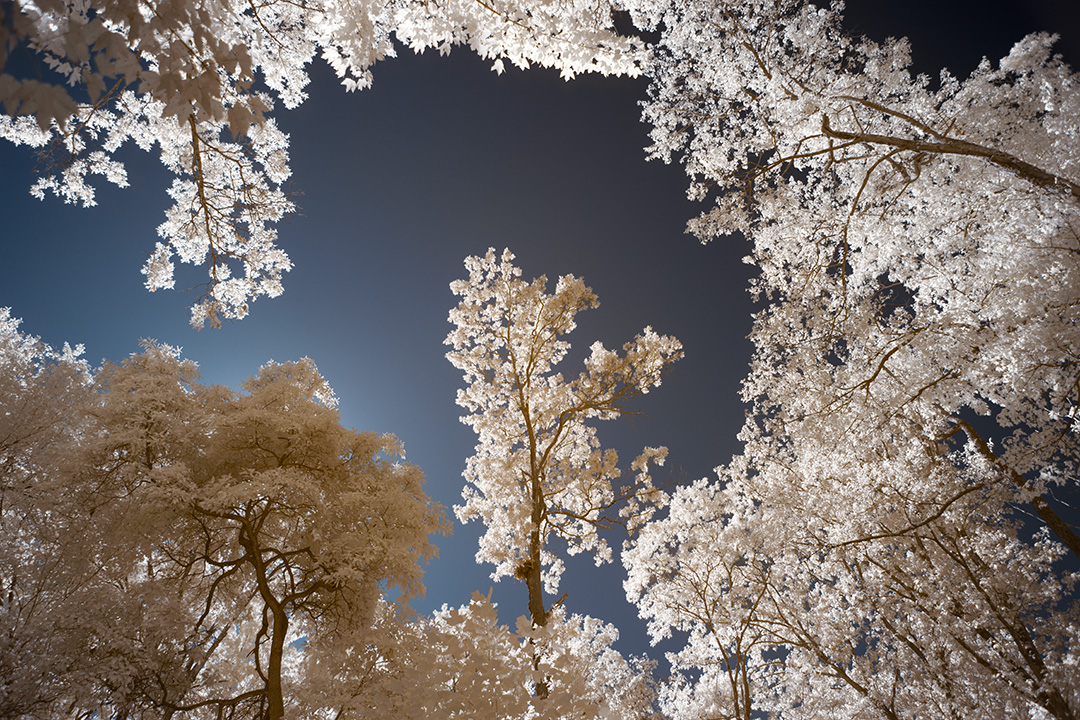
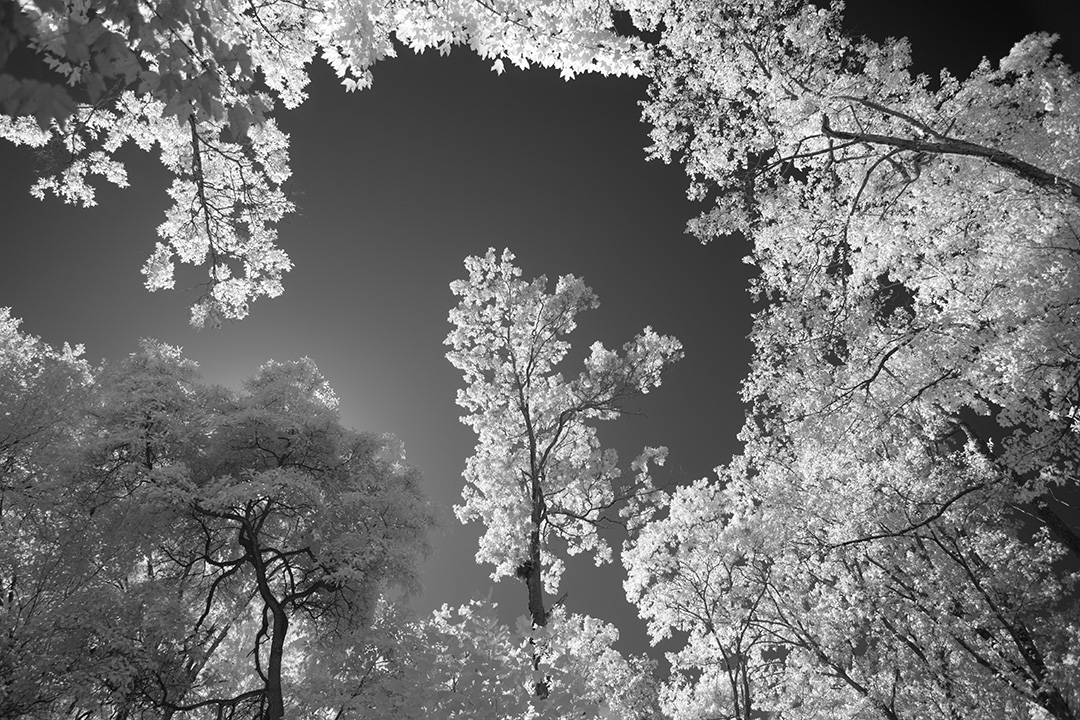
2. 780nm IR Filters
780nm is the perfect in-between of 720nm and 850nm filters. Unlike our 720nm filter, which requires some amount of editing to get pure B&W results, the 780nm filter provides a little more contrast than the 720nm in monochromatic tones straight out of camera. At this wavelength, you’ll start to see a reduction of color in comparison to 720nm. In other words, photographers can spend less time post-processing for faster results in B&W photography! One of the standout features of the 780nm filter is its reduced light loss and hotspots compared to the 850nm. This allows you to shoot at faster shutter speeds, making it easier to capture sharp, high-contrast B&W IR than with an 850nm filter.
When to use this filter: This filter offers higher contrast than 720nm but lets in more light than an 850nm filter, so it allows for relatively faster shutter speeds compared to the 850nm filter. It can be a great middle ground for photographers who want a black-and-white effect but prefer faster exposures. In other words, this filter is great for maintaining high contrast while having enough light for faster shutter speeds and low ISO. You can also expect a reduction of hotspots during use.
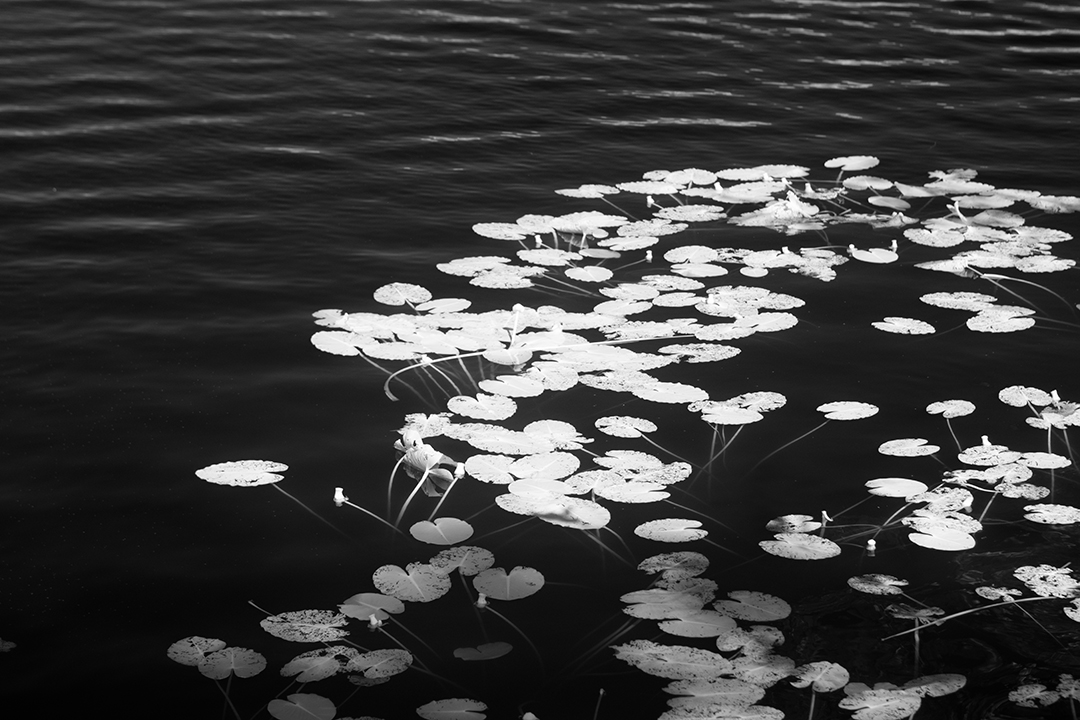
3. 850nm IR Filters
850nm provides the highest level of visible light blocking among the three, resulting in a predominantly black-and-white image with minimal hints of color, making it the ideal filter for a dedicated black and white infrared look. It will produce bright whites and pronounced darks. With a custom white balance in camera, the picture is close to pure B&W without any processing. Equivalent to the Wratten 87c.
When to use this filter: This filter is the best for the highest contrast B&W, resembling traditional B&W IR film. Also good for forensics and other applications where the deep IR wavelengths are helpful. This filter is compatible with a full spectrum camera or a lower cutoff IR converted camera. This filter can also be used with some stock cameras with a long exposure. Ideal for scientific, forensic, or artistic purposes where the emphasis is strictly on IR data or stark monochromatic visuals. Excellent for scenes where eliminating visible light contamination is crucial, ensuring pure IR capture. May necessitate precise exposure settings and potentially longer shutter speeds, especially in lower-light conditions.
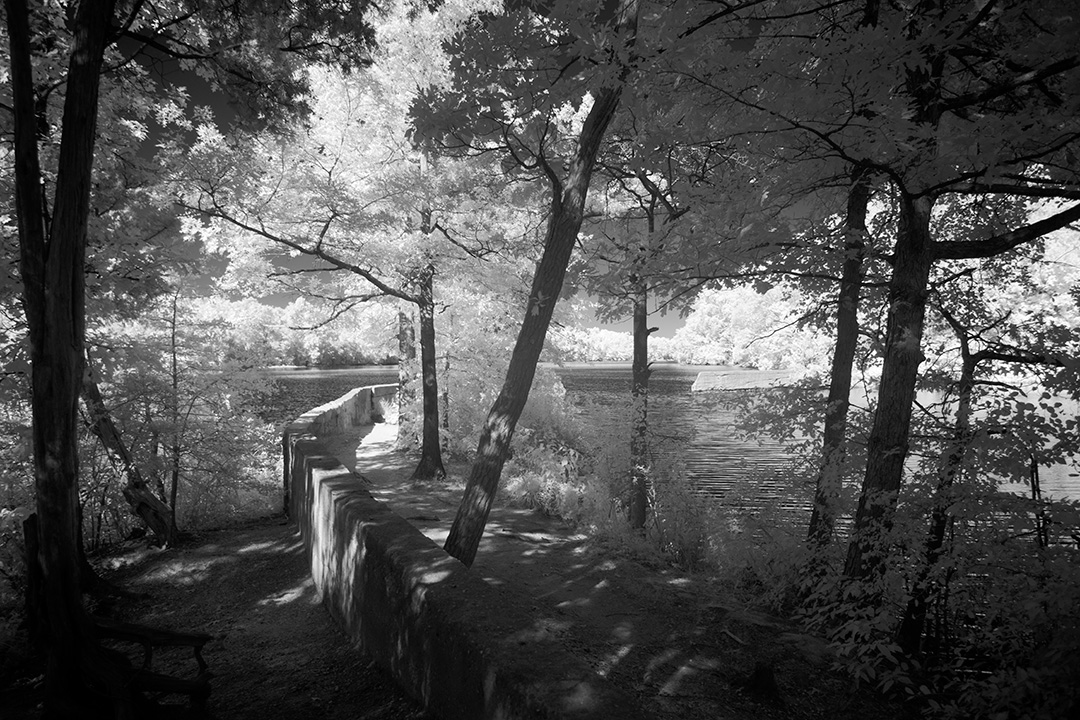
Choosing the Right Filter (Conclusion)
The choice between 720nm, 780nm, and 850nm IR filters depends largely on your creative goals, the nature of your subjects, and your camera’s IR sensitivity which will influence your settings. If you’re aiming for post-processing versatility in with your imagery, 720nm filter is the best choice. 780nm provides a good middle ground for post-processing capacity and B&W contrast. 850nm will give the most pure, high-contrast black and white imagery of the three filters. Experimenting with different filters can help you understand how each wavelength influences your images and determine which best aligns with your artistic vision in infrared photography or videography. Each filter brings out different aspects of infrared light, so the choice depends on whether you’re aiming for colorful infrared effects or sharp monochromatic images with high contrast.
- 720nm filters offer a balance between visible and infrared light, allowing for creative color effects and versatility in various shooting scenarios, especially in lower light compared to the other two.
- 780nm filters lean more towards monochromatic imaging with enhanced contrast and texture while still allowing more light to pass through for faster camera settings in shutter speed and ISO.
- 850nm filters provide the strongest IR effects with minimal visible light interference, ideal for high-contrast black-and-white imagery and specialized applications, but expect to need more light or slower shutter speeds to capture images.




